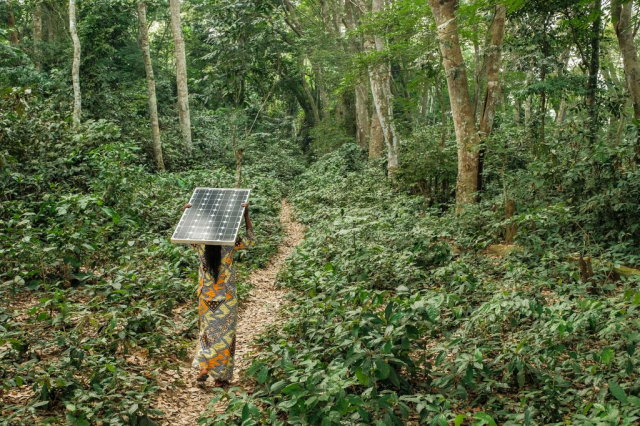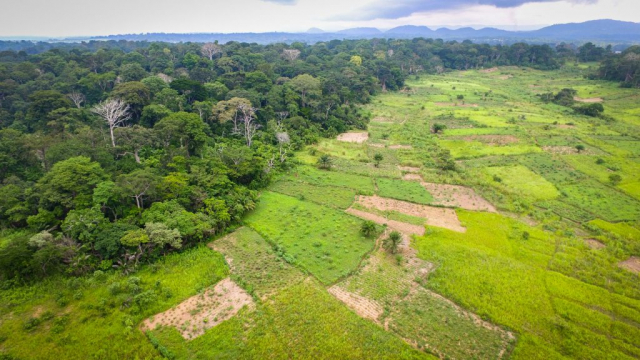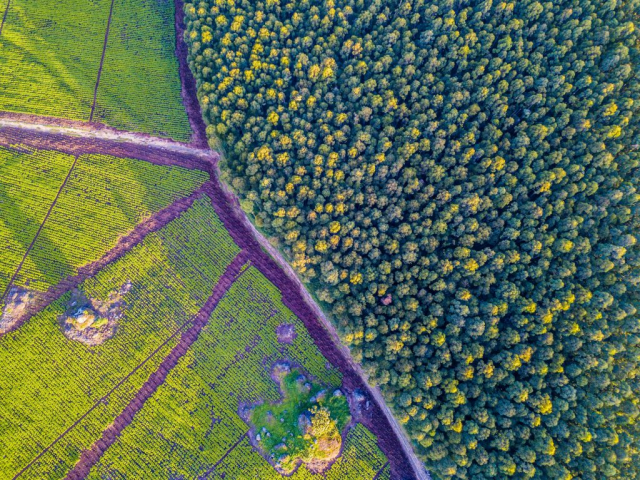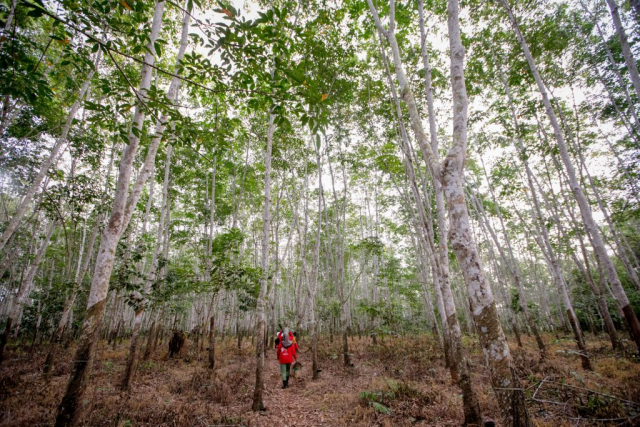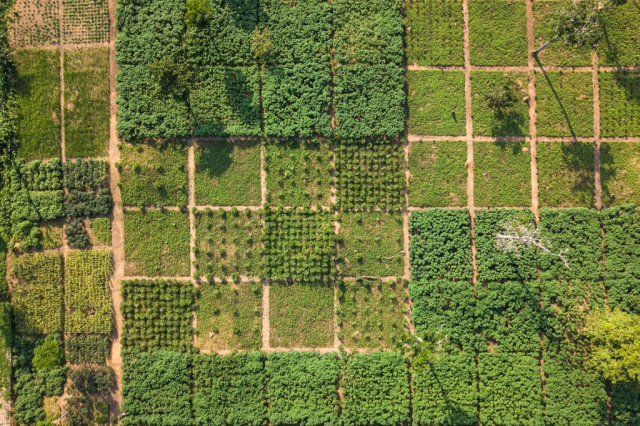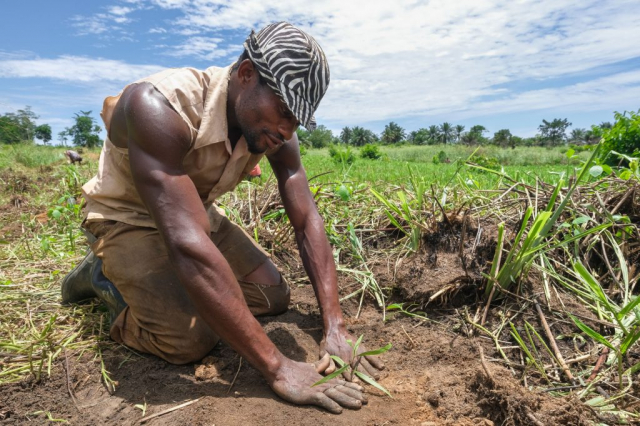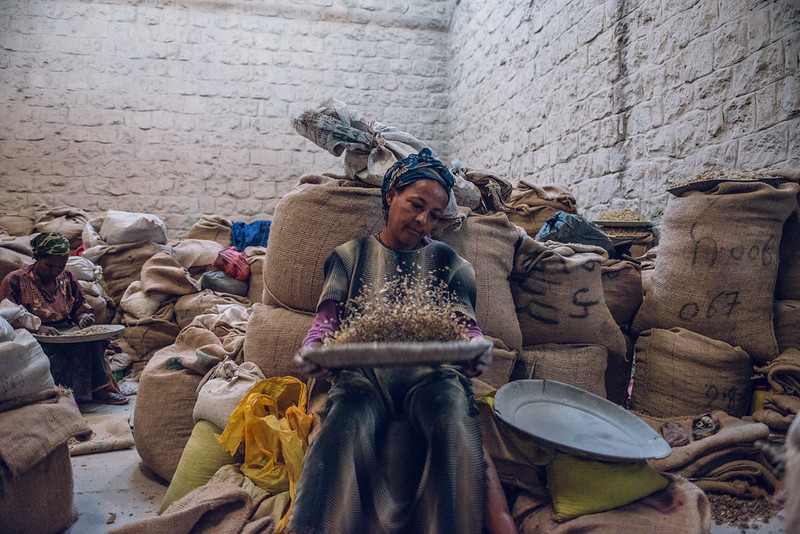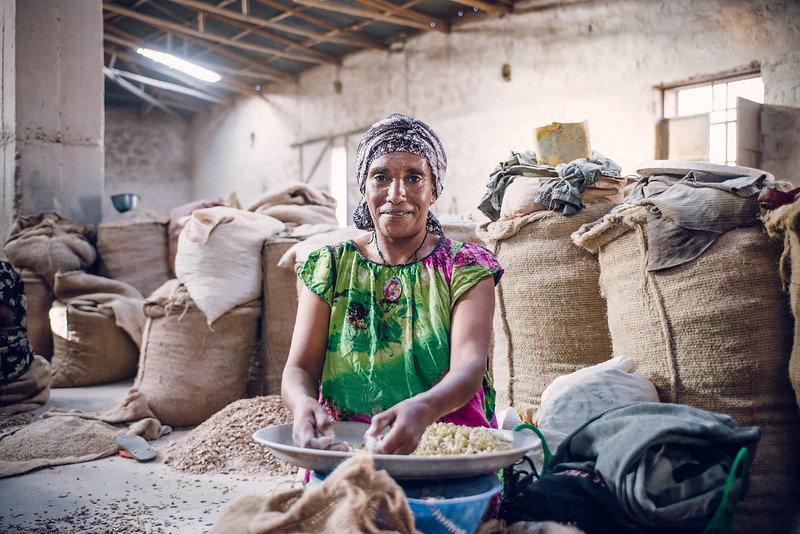The Collaborative Research Program on Forests, Trees and Agroforestry (CRP-FTA), one of the world’s largest research-for-development partnership, is completing a 10-year cycle as a CGIAR CRP. As a legacy of its work and to define the agenda for the years ahead, FTA is now launching a series of publications to set the spotlights on the program’s main results and achievements from 2011 to 2021.
“FTA Highlights of a Decade” series includes 18 chapters that illustrate FTA work and its impacts across a range of issues of critical importance for people and for the planet. The broad-ranging topics in the series showcases FTA’s evidence based work and impact orientation. FTA work, representing an investment of about USD 850m over a decade, was supported by CGIAR funders and bilateral projects.
The FTA Highlights Series:
- Introduction: Ten Years of Forests, Trees and Agroforestry Research in Partnership for Sustainable Development
- Tree Seed and Seedling Systems for Resilience and Productivity
- Conservation of Tree Biodiversity and Sustainable Forest Management
- Forest and Landscape Restoration
- Food Security and Nutrition
- Wild Meat
- Trees on Farms to Improve Livelihoods and the Environment
- Biomass, Bioenergy and Biomaterials
- Improving Rural Livelihoods Through Supporting Local Innovation at Scale
- Sustainable Value Chains and Finance
- REDD+: Combating Climate Change with Forest Science
- Adaptation to Climate Change, with Forests, Trees and Agroforestry
- Multi-Functional Landscapes for Sustainable Development
- Governing Forests, Trees and Agroforestry Landscapes for Delivering on the SDGs
- Advancing Gender Equality and Social Inclusion
- Capacity Development
- Monitoring, Evaluation, Learning and Impact Assessment
- The Way Forward
This list represents the order of the volumes in the series and not the time sequence of publication.
These highlight publications aim to illustrate the work of FTA in demonstrating the importance of forests, agroforestry and trees to give ways to the sustainable development agenda. When forests, trees and agroforestry are effectively used, managed and governed, they do improve production systems, ensure peoples’ food security, enhance livelihoods and help address climate change.
Each item in the series has two purposes. First, to showcase the research work of FTA and its partners, the influence of the program to deliver effective technical, social and institutional innovations for a range of stakeholders, including decision makers at the local, national and international level, connecting policy and practice. Second, in telling the story of FTA work on a topic, to shed a special “FTA” light on each topic’s story and its – often quite significant – evolution during a decade.
The topics of the volumes were chosen based on the operational priorities of FTA and the whole series is written by FTA scientists, elaborated under the overall guidance of an editorial committee and the oversight of the FTA Independent Steering Committee.
The first highlights to be released are the Introduction, Highlight No. 1, and the volume on Forest and Landscape Restoration (FLR), Highlight No. 4.
Volume 1 – Introduction
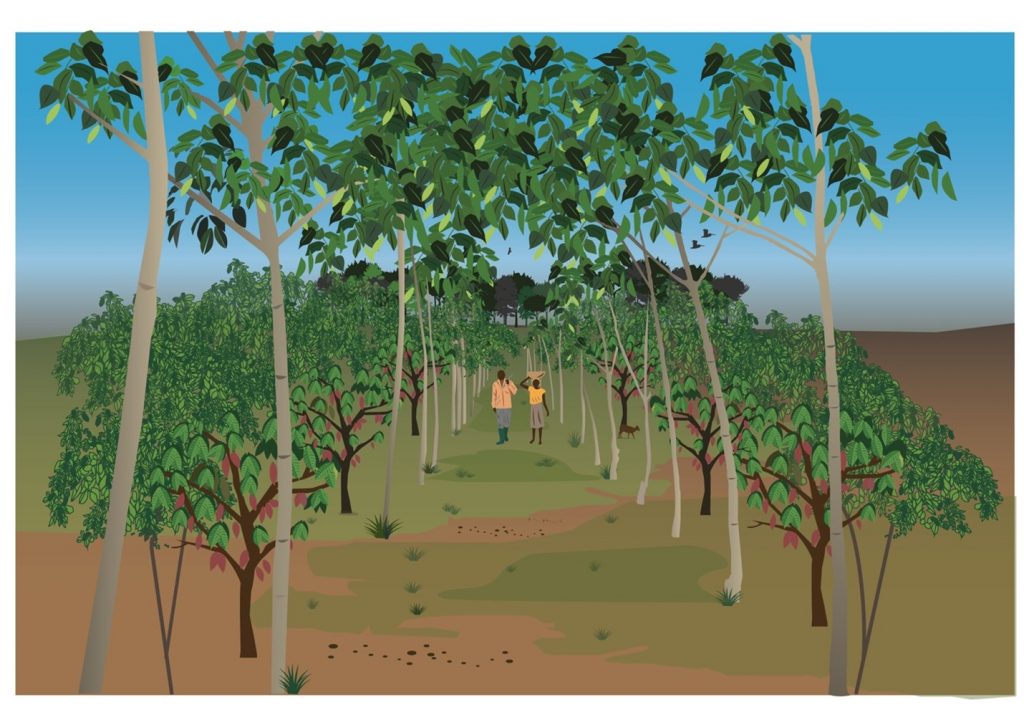
FTA’s work aims to enhance the role of forests, trees and agroforestry in sustainable development and food security and to address climate change. This means impacting positively the life of those estimated 1.6 billion people that depend on forests and trees for their livelihoods. But more broadly the ambition is to be relevant for every people on the planet, as in a way or another, we are all connected to trees and forests.
If the history of humankind is 300 thousand years old, the history of trees and forests is 300 million years old. But humanity has a complex relationship with trees. Our growing population shares the planet with approximately three trillion trees, which represents almost half of the trees present on the planet at the start of human civilization. Part of the reason for this tree loss is due to agricultural lands expanding. The more people there are, the more crop, livestock, fish, timber the world needs to grow, the more space it needs for cities and infrastructures. Does this necessarily need to be done at the expense of forests, and at the expense of trees in farming systems and of trees in landscapes?
FTA’s vision is that humankind can change the direction of its development trajectory to avoid a doomsday scenario, and towards a pragmatic path of sustainability that balances productivity and preserves the integrity of the environment. We call this path a “sustained agility”, where productivity is carried out in harmony with nature.
The dot in the figure below represents our current situation.
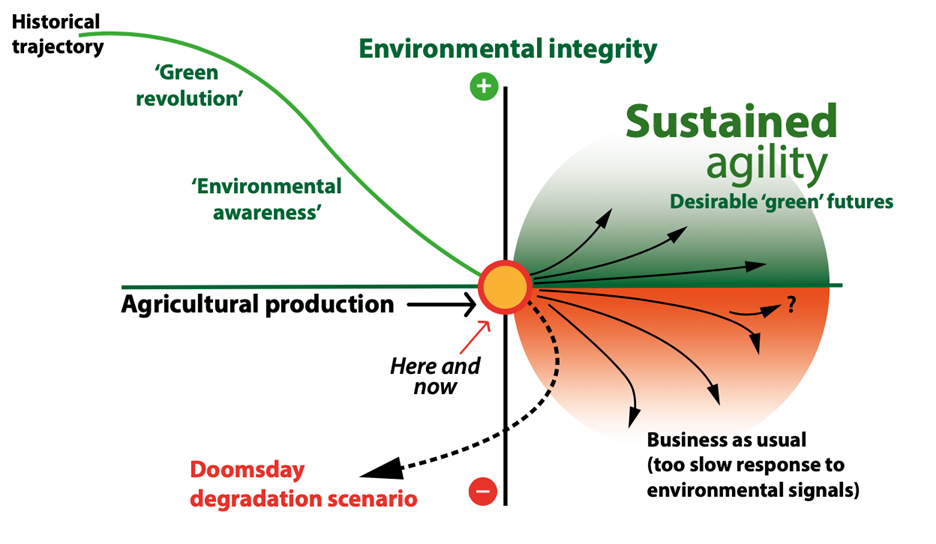
Underpinning the “sustained agility” scenario is a fine understanding of what trees and forest can bring to a range of challenges, if these resources are properly managed, and if the right governance is in place. Whether it is about the future of cities, of our energy system, of material resource systems, of our food systems, of our landscapes, and of our climate, forests, trees and agroforestry are – almost always – an ingredient to our most promising solutions. They are the key to our future.
Making complex pathways easy to grasp
One of the pillars of the FTA program is the forest transition curve (the red line in the figure below) – whose very definition was coined by FTA scientists, and now worldwide known. Looking at the totality of the world landscapes at a certain point in time reveals a quite complex set of land-use patterns. But a new light is shed when we look at these patterns through time: the curve enables us to better understand and anticipate the consequences (both positive and negative), over time of economic development on forests, land use and the environment. It also enables to figure out the levers of action to prevent degradation of ecosystems and improve overall productivity and ecosystem services.
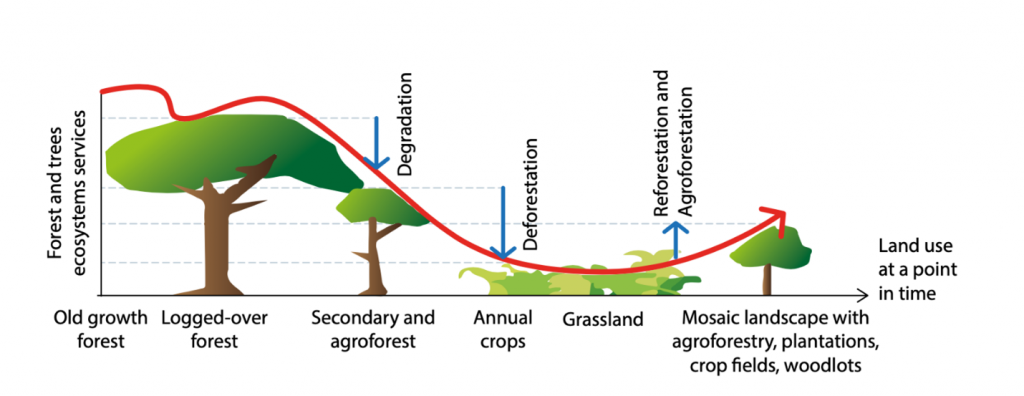
Compared to annual crops, trees have the particularity to force anyone to consider, inherently, the time dimension. What you do to forests now, will impact you for decades. The decision to plant a tree today, to organize differently your farm system with trees, is a decision that has consequences through time. An intervention that contains trees is therefore always a “change” on top of an evolution (in time). A change, on top of another change. This is why FTA uses the language of ‘Theory of Induced Change’ (leverage points, intervention) over a ‘Theory of Change’ (the forest transition curve representing the “baseline” evolution of the system due to various social-ecological processes and their drivers). This distinction clearly allows to identify leverage points to modify pathways of change and development, through context specific action.
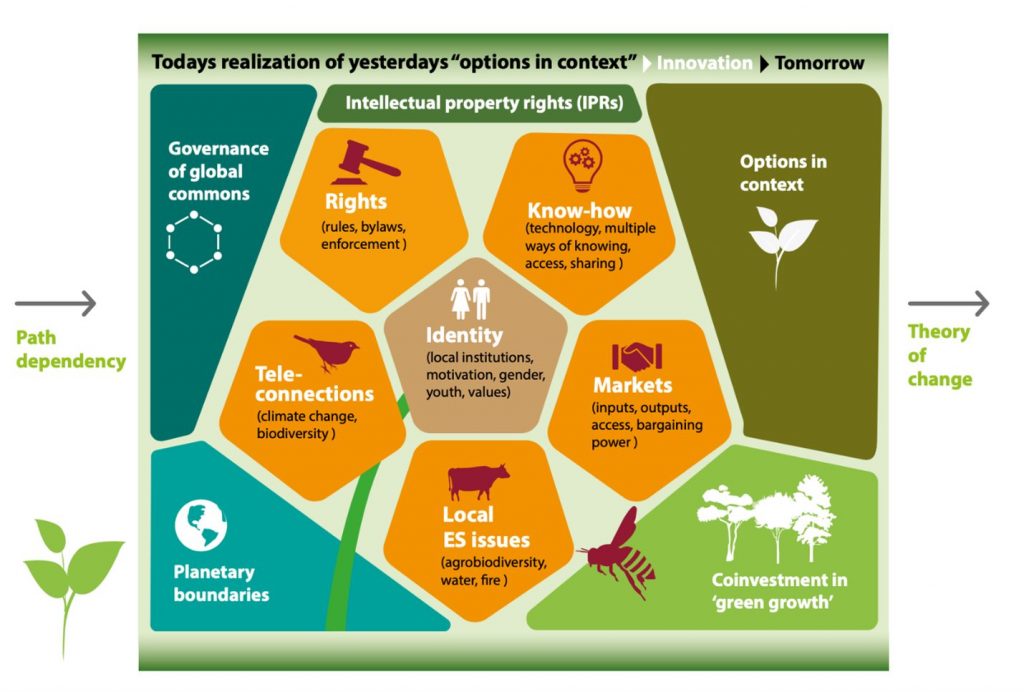
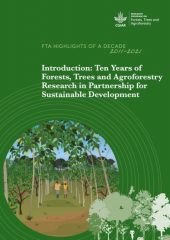
Download the Introduction to learn more about FTA’s efforts in 10 years of research in partnership. And stay tuned for more highlights! Each one will allow you to discover or rediscover – through FTA “eyes” – milestones in the forests, trees and agroforestry research advancement. A way to read about how knowledge, linked to peoples’ buy-in and power, well used can really make a change for our global agenda in sustainable development!
Download infographics
Vincent Gitz, FTA Director

